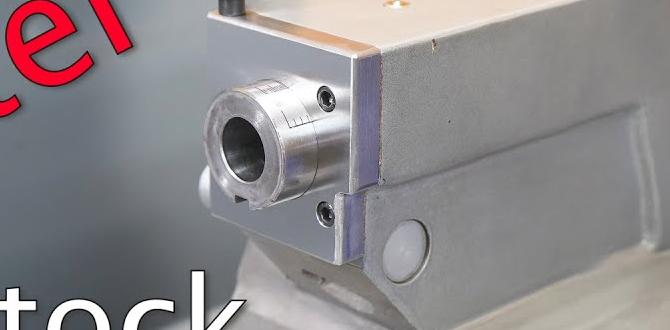Achieving an effortless clean in your woodworking space is far more attainable when you prioritize effective wood lathe dust collection. The inherent nature of turning wood on a lathe produces a significant amount of fine dust, chips, and shavings. Without a robust system in place, this debris can quickly accumulate, obscuring your workpiece, creating respiratory hazards, and making the entire experience less enjoyable and potentially dangerous. Investing in and properly implementing a wood lathe dust collection system is not merely about tidiness; it’s a crucial step towards a healthier, safer, and more productive woodworking environment.
The immediate impact of a good dust collection system is a clearer view of your turning project. As you shape and refine your wood, errant particles can obscure critical details, forcing you to stop frequently to wipe down your workpiece and your lathe. This constant interruption breaks your concentration and diminishes the flow of your creative process. A well-designed system, however, efficiently captures the airborne dust and debris at the source, preventing it from settling on your lathe, your tools, and yourself. This means you can focus on the intricacies of your turning, achieving a higher level of precision and detail with fewer interruptions. The smooth, uninterrupted workflow that a dust collection system enables can transform your turning sessions from a messy chore into a truly satisfying artistic endeavor.
Choosing the Right Wood Lathe Dust Collection System
The market offers a variety of options when it comes to wood lathe dust collection system solutions, each with its own strengths and weaknesses. Understanding these differences is key to selecting the best fit for your workshop and your specific needs.
One common approach is the use of a standalone shop vacuum. These are relatively inexpensive and readily available. Many woodworkers utilize a fine-mesh filter bag or a HEPA filter to improve their capture efficiency. For smaller lathes and occasional turning, a powerful shop vac can offer a noticeable improvement over no collection at all. However, for more intensive use or if you’re turning larger pieces that generate more substantial waste, a shop vac alone might struggle to keep up. The noise level of shop vacs can also be a concern, and their dust bags can fill up quickly, requiring frequent emptying.
A more integrated and often more effective solution is a dedicated dust collector. These units are specifically designed for woodworking dust and range from portable single-stage collectors to more robust, multi-stage systems. Single-stage collectors typically use a large impeller to draw dust directly into a collection bag or drum. They are a significant step up from shop vacs in terms of airflow and capacity. Two-stage collectors add a cyclone separator, which spins the dust out of the airstream before it reaches the filter or collection bin, leading to less filter clogging and more consistent airflow. This is a highly recommended configuration for serious woodturners.
Harnessing the Power of a Portable Wood Lathe Dust Collection System
For woodturners who have limited space or need flexibility, a portable wood lathe dust collection system is an excellent compromise. These units are designed to be easily moved around the workshop, allowing you to position them strategically near your lathe. Many portable dust collectors offer surprising power and efficiency, capable of handling the demands of most turning projects. They often feature compact footprints, making them ideal for smaller garages or basement workshops. The key is to select a unit with adequate CFM (cubic feet per minute) ratings to effectively capture the dust generated by your lathe. Look for models that offer good filtration, ideally with a micron rating that can capture the finest particles, which are the most harmful to your respiratory system.
Essential Components of an Effective Setup
Regardless of the type of wood lathe dust collection system you choose, certain components are crucial for optimal performance. The dust hose is one of the most critical elements. It needs to be sufficiently sized to handle the airflow without creating excessive pressure drop. Smooth interior surfaces help prevent clogging, and flexible materials allow for easy maneuvering around the lathe. Keeping the hose as short and straight as possible between the dust collection point and the collector will maximize its efficiency.
Collection Hoods and Attachments are another vital aspect. While some dust collectors come with general-purpose nozzles, specialized hoods designed for wood lathes can significantly improve dust capture. These hoods are typically shaped to enclose the cutting area as much as possible, directing the dust straight into the collection hose. Many woodturners also create their own custom dust collection hoods, tailoring them to the specific shape and operation of their lathe.
Filtration is paramount. Simply collecting dust isn’t enough; you need to filter it effectively to prevent fine particles from being recirculated into your shop air. Look for systems with at least a 1-micron filter, and ideally finer. If your system uses standard fabric bags, consider upgrading to a pleated cartridge filter, which offers a much larger surface area and better filtration.
Safety and Health Benefits
Beyond the immediate benefits of a cleaner workspace, a wood lathe dust collection system offers significant advantages for your health and safety. According to the Occupational Safety and Health Administration (OSHA), repeated exposure to wood dust can lead to respiratory problems, including asthma, bronchitis, and even certain types of cancer. Fine wood dust can also irritate your eyes and skin. By effectively capturing and containing this dust, you significantly reduce your exposure and create a much healthier working environment.
Furthermore, accumulated dust and shavings on and around your lathe can be a fire hazard. Static electricity can easily ignite the fine particles, leading to a dangerous fire. A good dust collection system minimizes this buildup, reducing the risk of such incidents.
Maintenance for Longevity and Performance
To ensure your wood lathe dust collection system continues to operate at peak performance, regular maintenance is essential. This includes:
Emptying collection bins/bags regularly: Don’t let them overflow, as this can impede airflow and reduce collection efficiency.
Cleaning or replacing filters: Clogged filters drastically reduce suction and filtration. Follow the manufacturer’s recommendations for cleaning or replacement intervals.
Checking hoses and connections: Ensure there are no leaks or obstructions in your ductwork. Leaks can significantly reduce the system’s effectiveness and lead to dust escaping into your workshop.
Inspecting the impeller: Over time, debris can accumulate on the impeller, reducing its efficiency and potentially causing imbalances.
Conclusion
a well-implemented wood lathe dust collection system is an indispensable tool for any serious woodturner. It’s an investment that pays dividends in terms of a cleaner workspace, improved visibility, enhanced safety, and, most importantly, a healthier you. By understanding your options and committing to proper maintenance, you can transform the often-messy process of woodturning into an effortlessly clean and enjoyable experience.





